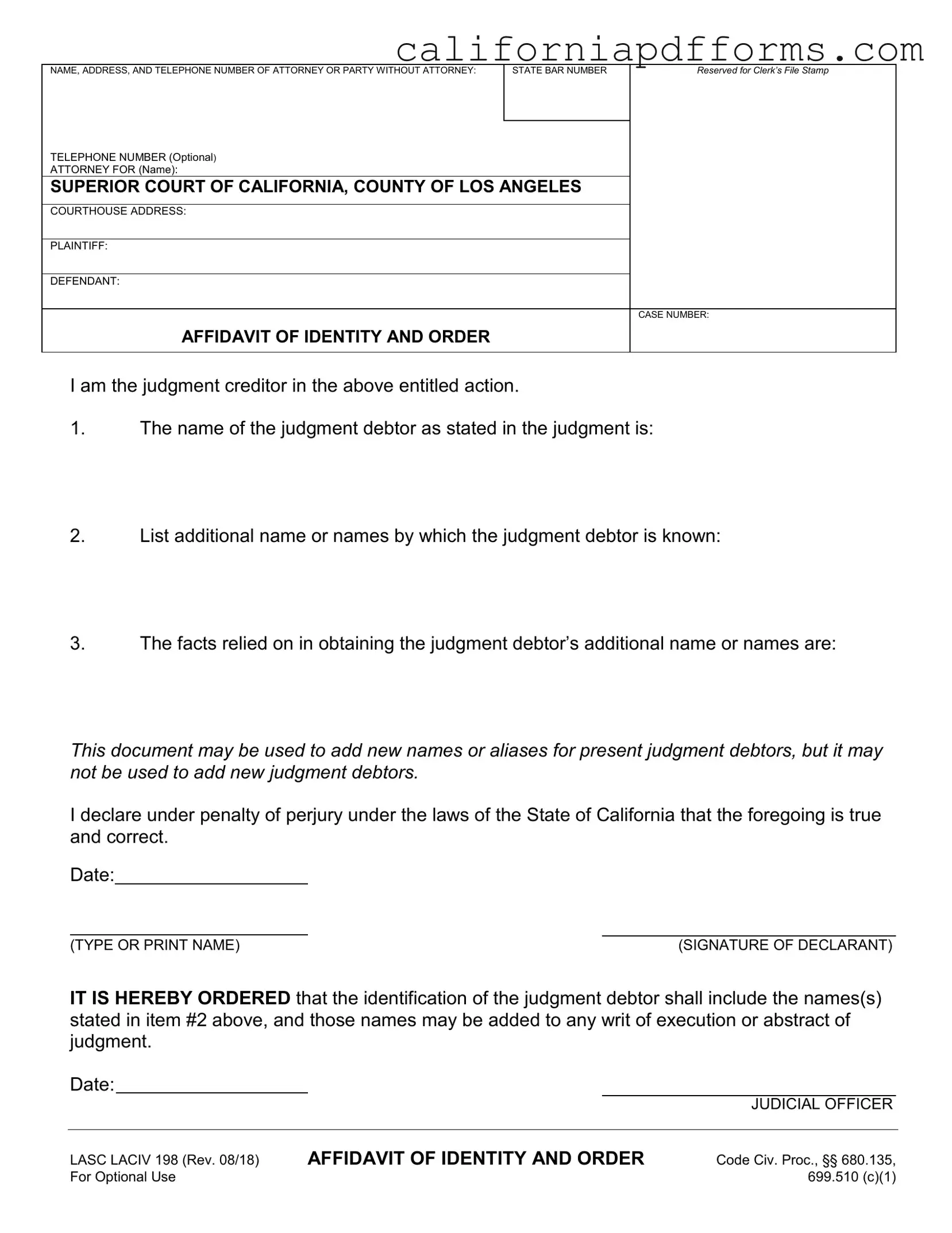The California Laciv 198 form is primarily used to add additional names or aliases for a judgment debtor in a legal case. If a judgment has been issued against someone, and that person is known by other names, this form allows the creditor to officially recognize those names in court documents. However, it is important to note that this form cannot be used to add new judgment debtors; it is strictly for identifying existing ones.
The form should be filled out by the judgment creditor, who is the individual or entity that has won a judgment against the debtor in court. This creditor must provide their details, including name, address, and contact information, as well as the relevant case number and the name of the judgment debtor.
When completing the Laciv 198 form, the following information must be provided:
-
The name of the judgment debtor as stated in the original judgment.
-
Any additional names or aliases by which the judgment debtor is known.
-
The facts that support the claim of these additional names.
Additionally, the creditor must sign the form, declaring that the information is true and correct under penalty of perjury.
Once completed, the Laciv 198 form should be submitted to the Superior Court of California, County of Los Angeles. It is advisable to file the form with the same court where the original judgment was issued. You may need to check with the court for specific submission procedures, which can vary by location.
After the form is submitted, a judicial officer will review it. If approved, the court will issue an order that recognizes the additional names provided in the form. This order allows those names to be included in any writ of execution or abstract of judgment, which can help the creditor enforce the judgment more effectively.
There may be a filing fee associated with submitting the Laciv 198 form, depending on the court's policies. It is recommended to check with the Los Angeles Superior Court for the most current fee schedule. In some cases, fee waivers may be available for individuals who qualify based on financial need.
